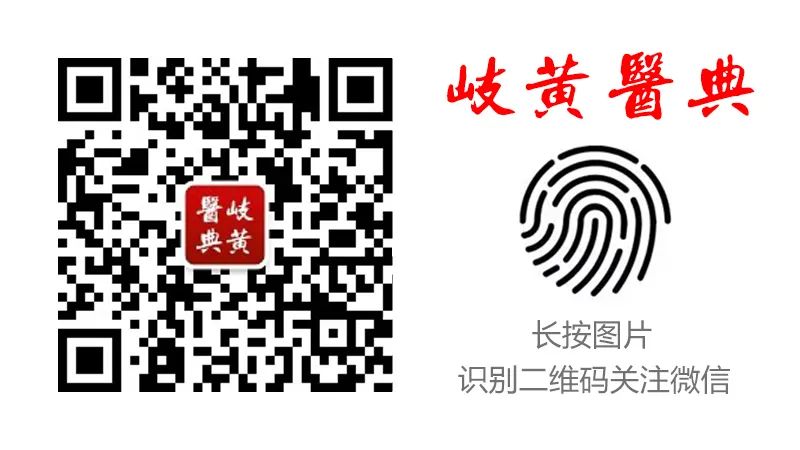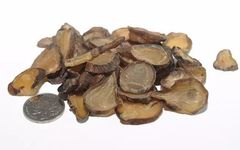

Comprehensive TCM Classics >>>【TCM Treasure】 Mobile App: Free Download + Free Use
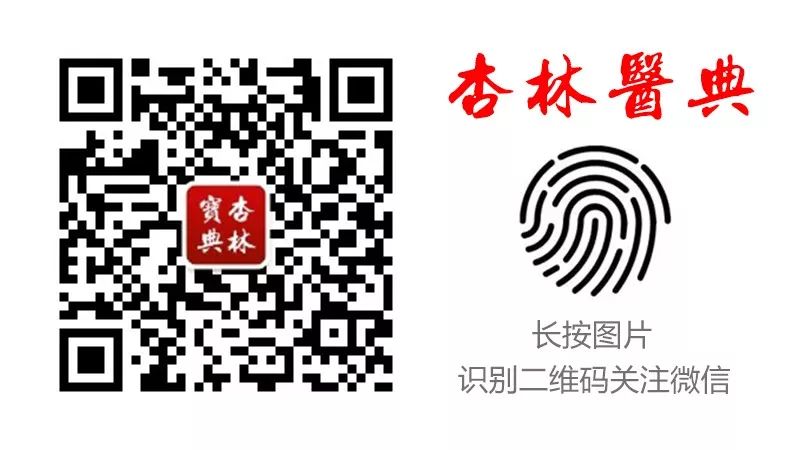
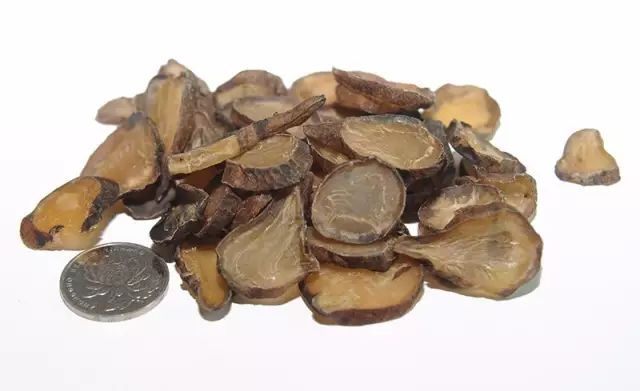
Introduction to Dr. Li Ke
Dr. Li Ke, a renowned contemporary TCM physician, is known for his expertise in the application of high doses of Fuzi (Aconite). He advocates the principle of supporting Yang and has extensively studied Zheng Qinan’s theory of Yang predominating over Yin. He emphasizes the use of high doses of formulas centered around Fuzi to treat complex and difficult diseases, achieving remarkable results that have garnered the attention and study of many contemporary clinical practitioners.
Following the publication of “Dr. Li Ke’s Experience in Treating Critical and Difficult Diseases,” his disciples have compiled and published works such as “Notes on Prescriptions from Following Dr. Li Ke: Tumor Edition” and “Practical Record of Dr. Li Ke’s Academic Experience.” Here, we summarize his experiences in the application of Fuzi.
Exploration of Fuzi Dosage
In modern times, influenced by textbooks, the typical dosage of Fuzi is around 10g, often requiring pre-cooking. This method has become a standard in contemporary applications of Fuzi. Dr. Li Ke believes that the reason why TCM struggles to treat critical heart failure is due to two main factors: first, historical practitioners have used formulas for treating febrile diseases with insufficient dosages, with the main herb Fuzi being only around 10g.
Secondly, examining the original formula of Si Ni Tang from the “Shang Han Lun,” which uses one piece of raw Fuzi, and based on archaeological findings, this piece is approximately equivalent to 20g today. Assuming the toxicity and efficacy of raw Fuzi are more than double that of processed Fuzi, the original formula’s dosage would equate to 40-60g of processed Fuzi in modern terms. However, historical and modern applications of Si Ni Tang have only used 1/6 to 1/10 of the original dosage. For instance, modern textbooks often prescribe 6-10g of processed Fuzi (pre-cooked), along with 10g of dried ginger and 6g of honey-fried licorice. Such light dosages, Dr. Li Ke argues, make it exceedingly difficult to save lives in critical situations!
To explore the dosage of Fuzi, Dr. Li Ke spent nine years gradually experimenting in clinical practice. In July 1961, he treated a 60-year-old woman on the brink of death, whose limbs were cold, blood pressure undetectable, and pulse absent, with only a slight warmth in the chest and no cessation of breathing or heartbeat. He decided to use an extraordinary dose of 150g of processed Fuzi in Si Ni Tang with ginseng, boiling it urgently over high heat, and administering it continuously. After one hour, the patient was revived.
From this experience, Dr. Li Ke concluded that when using classical formulas to treat major conditions, it is essential to accurately differentiate the syndrome and act decisively without hesitation; secondly, one must grasp the foundational effective dosage of classical formulas, using sufficient amounts in a single dose, frequently administering it day and night to halt the progression of the disease and save lives.
After decades of clinical research, Dr. Li Ke established that the effective dosage of classical formulas should be half of the original amount (as discussed in Zhang Zhongjing’s “Shang Han Lun”). This point has been corroborated by archaeological findings regarding Han Dynasty measurements, which indicate that one tael is equivalent to approximately 15.625g today. Not only has Professor Ke Xuefan from Shanghai previously discussed this in his works, but it has also been clinically validated and aligns with practical situations.
The book “Revealing the Dosage of Classical Formulas” confirms that the verified dosage of classical formulas equates to 13.88g per tael, consistent with the composition and dosage ratios of classical herbal medicines. In recent years, multiple academic conferences on classical formulas have largely agreed with this viewpoint, asserting that the conversion of one tael to 3g deviates from the original meaning of classical formulas.
Using the dosage of 13.8g (Dr. Li Ke agrees on 15g) of Fuzi, he believes this amount can save critically ill patients, achieving remarkable effects with one dose known and two doses effective. Interestingly, Dr. Li Ke is particularly adept at using such high doses of Fuzi in his formula Po Ge Jiu Xin Tang to rescue patients in critical condition, successfully reviving thousands of patients on the brink of death, truly achieving one dose known and two doses effective, gaining widespread recognition locally.
At the same time, Dr. Li Ke asserts that using a dosage of Fuzi below 15.6g (equivalent to one tael) to treat critically ill patients is ineffective or may delay treatment, risking lives! Reviewing the history of TCM, the saying “one tael in ancient times equals one qian today” has become a rule over the centuries. While using light dosages may seem stable, it has compromised the most excellent aspects of Zhang Zhongjing’s academic thought.
The book “Revealing the Dosage of Classical Formulas” mentions that if one tael of Fuzi is calculated as 13.8g, and compared with the dosage of one tael being 3g, experiments comparing high-dose and low-dose Si Ni Tang on small animals in shock showed that the high-dose group had significant effects, while the low-dose group was ineffective.
The results indicate that the effects of Fuzi in Si Ni Tang are positively correlated with its dosage. This finding also confirms that Dr. Li Ke’s exploration of high-dose Fuzi not only has historical basis but also experimental evidence proving its effectiveness.
Therefore, Dr. Li Ke believes that only by eliminating this bad habit and stepping out of the misunderstanding can TCM effectively treat major diseases, critical illnesses, and severe conditions. The recent surge in the academic thought of the Huoshen School further validates Dr. Li Ke’s foresight.
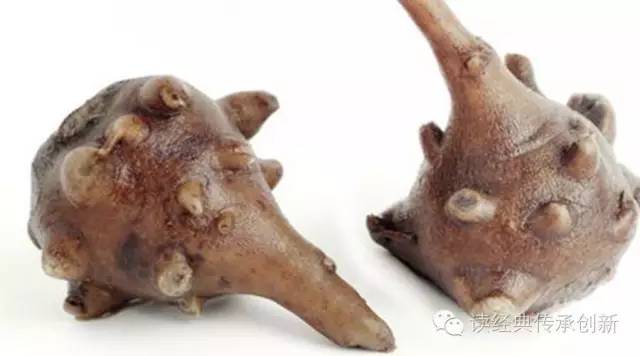
Application Dosage of Fuzi
Dr. Li Ke not only explored the dosage of Fuzi clinically, equating one tael from Zhang Zhongjing’s era to approximately 15g today, but also established his unique dosage of Fuzi based on different conditions.
For example, in treating various heart failures with his formula Po Ge Jiu Xin Tang, he used between 30-100-200g of processed Fuzi, having treated over ten thousand patients, with some critically ill patients receiving over 500g of processed Fuzi within 24 hours. Dr. Li believes that when heart failure is critical, the patient’s overall function is failing, and the five organs and six bowels, as well as the three burners, are heavily burdened by Yin and cold, with life and death hanging by a thread; if Yang returns, life is possible; if Yang departs, death is inevitable.
Only by using the pure Yang properties of Fuzi, which is extremely hot and powerful, can one break through the barriers of Yin and return Yang, thus saving lives on the brink of death. Moreover, the toxicity of Fuzi is precisely what gives it its life-saving efficacy.
Regarding this understanding, modern animal experiments have shown that high doses of Fuzi in Si Ni Tang have excellent rescue effects on various types of shock in animals, while low doses of Fuzi do not exhibit such effects. This further corroborates Dr. Li Ke’s scientific conclusions regarding the clinical application of high-dose Fuzi.
Recent animal experiments indicate a clear dose-response relationship between Fuzi dosage and therapeutic effects. Dr. Li Ke’s observations over decades of clinical application also fully demonstrate the significant dose-response relationship of Fuzi. However, he believes that the dosage of Fuzi must not only be precisely differentiated but also consider the patient’s combined and complex symptoms to achieve good clinical outcomes.
In recent years, Dr. Li Ke has made new breakthroughs in the application of Fuzi dosage in treating complex and difficult diseases.
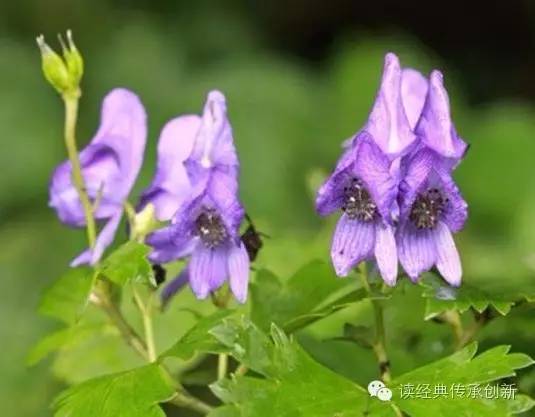
For instance, in treating cancer, the initial dosage of processed Fuzi is often around 100g, then gradually increased to 200g, 300g, or 400g depending on the patient’s tolerance, until the maximum clinical therapeutic effect is achieved. For severe cancer patients, if the high-dose processed Fuzi is not effective, raw Fuzi is often used at 30-60g to achieve a dual effect of attacking toxins and supporting the body’s righteousness.
Dr. Li Ke often employs a gradual increase method for processed Fuzi in treating severe or cancer patients to reach the maximum therapeutic dosage. Generally, he uses two methods: one is to double the dosage of Fuzi, such as starting with 45g of processed Fuzi, then increasing to 90g after the second diagnosis, 150g after the third diagnosis, and finally reaching 300g until the maximum effect is achieved.
The other method is to start with 60-100g of processed Fuzi and gradually increase by 10g each day, meaning that for each dose of herbal medicine, 10g of processed Fuzi is added until the maximum dosage of 200-300-400g is reached for optimal clinical efficacy.
For example, in a case of lymphoma, Dr. Li Ke guided a student where the initial dosage of Fuzi was 100g, and the dosage was increased by 10g daily until reaching 300g, 800g, 900g, and finally 1000g, after which raw Fuzi was used at 30g, ultimately saving the critically ill patient and achieving clinical recovery. However, after achieving clinical efficacy, the dosage of processed or raw Fuzi should be reduced to a small amount or the original dosage minus 30g for maintenance treatment.
In another case of a 58-year-old woman with multiple bone cancers, the initial treatment used 100g of processed Fuzi, and the dosage was increased by 10g daily, reaching 150g, 200g, and 300g. After the patient’s pain was alleviated, the dosage was immediately reduced to 100g of processed Fuzi for maintenance treatment. Ultimately, to achieve the maximum effect, raw Fuzi at 30g and raw Chuanwu (Aconitum carmichaelii) at 30g were used to enhance the treatment effect.
In treating internal medicine’s difficult and complex diseases, Dr. Li Ke generally starts with a dosage of around 100g of processed Fuzi, then increases it daily to 200g or 300g based on the condition, and after achieving efficacy, immediately reduces it to a medium-small dosage of 90-100g for maintenance.
As for why Dr. Li Ke gradually increases the dosage of Fuzi when treating difficult diseases, he believes that the dosage must reach the “mingxuan effect” to achieve optimal clinical efficacy. This is because, during the struggle between the body’s Yang energy and Yin pathogens, if the Yang energy cannot resist the Yin pathogens, the patient can only watch their condition worsen day by day without the ability to recover.
To change this situation of excessive Yin and deficient Yang, it is necessary to gradually increase the dosage of processed Fuzi to promote the rise of Yang energy. When the Yang energy rises to a level where it can resist the Yin pathogens, the “mingxuan reaction” will occur, indicating the powerful Yang energy is being stimulated by Fuzi.
At this point, the body can produce the maximum expulsion of Yin pathogens, allowing the body to gradually recover from the state of excessive Yin and deficient Yang to a physiological state where Yang predominates and Yin follows, thus truly overcoming the affliction of disease and restoring the state of “Yin Ping Yang Mi” (from the “Neijing”).
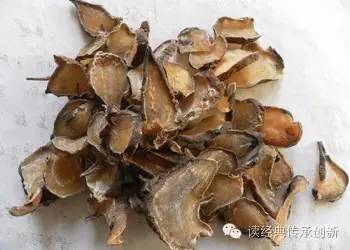
Pharmacological Reactions of Fuzi
A qualified classical formula physician must be able to recognize the pharmacological reactions of Fuzi, which is an important standard of its dosage. Dr. Li Ke is adept at using high doses of Fuzi, and not only is he well-versed in its pharmacological effects, but to maximize its efficacy, he ensures that Fuzi achieves the manifestation described by Zheng Yinan: “Yang medicine operates, Yin pathogens are transformed away,” resulting in the “mingxuan” reaction, which includes dizziness, fainting, or temporary loss of consciousness followed by awakening.
This aligns with the saying in the “Shang Shu: Shuo Ming”: “If the medicine does not cause mingxuan, the disease will not heal.” In other words, if the administration of Fuzi does not lead to a “mingxuan” reaction, the disease is difficult to cure.
In recent years, Dr. Li Ke has treated many difficult and complex diseases, using larger initial dosages of Fuzi to achieve the “mingxuan” reaction, often doubling the dosage or increasing it daily until the “mingxuan” reaction occurs, after which the dosage is reduced to a maintenance level.
Zheng Qinan detailed the pharmacological reactions after taking Fuzi in his work “Yifa Yuantong: Notes on Taking Medicine,” and I have also collected the characteristics of pharmacological reactions recorded by many physicians in my work “The First Essential Medicine of the Huoshen School – Fuzi”.
However, upon closely reading Dr. Li Ke’s writings, I found that his records of Fuzi reactions are not only detailed but also contain many typical symptoms with significant clinical reference value. The main points are summarized as follows:
1Transformation of Yin Syndrome to Yang with High Fever
Dr. Li Ke believes that the transformation of Yin and Yang is also based on the restoration of the patient’s righteous Qi. In Yin syndrome, appropriate medication restores righteous Qi, expelling hidden pathogens from within to the surface, transforming Yin syndrome to Yang, indicating improvement. In Yang syndrome, excessive use of bitter and cold herbs damages the spleen and kidneys, leading to a transformation of Yang syndrome to Yin, resulting in prolonged illness.
For example, in treating a female patient with Yang deficiency lupus, after taking three doses of a warming heavy formula (containing 50g each of Angelica and Evodia, 15g each of cinnamon twig, white peony, and asarum, 30g each of honey-fried licorice and Fuzi, 30g of cinnamon, and 125g of ginger), the patient suddenly experienced chills and high fever, with a temperature reaching 40.5°C. Subsequently, she was treated accordingly and recovered.
Thus, Dr. Li Ke believes that this occurs because the cold pathogen has long been hidden, and with the assistance of warming Yang, the Yin syndrome transforms to Yang, leading to external heat. This is a strong expulsion of Yin pathogens, resulting in high fever. At this time, in addition to actively responding to treatment, Dr. Li Ke emphasizes the importance of protecting the patient’s righteous Qi to prevent excessive damage to it.
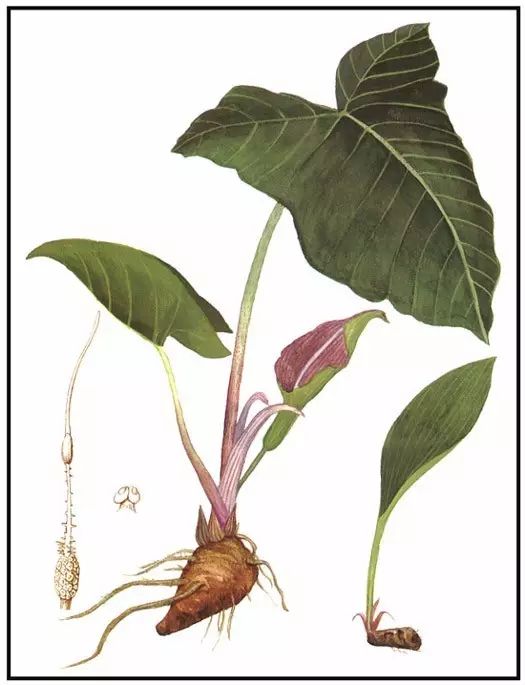
2Tumor Shedding
The “Neijing” states: “Yang transforms Qi, Yin forms shape.” Therefore, all formed tumors arise from the failure of Yang Qi to transform, leading to the formation of tumors. After using high doses of the Yang-supporting herb Fuzi, the Yang Qi of the body is invigorated, opening pathways between tumors, thus allowing formed tumors to shed and be expelled from the body.
For instance, Dr. Li Ke treated a case of rectal cancer with leukemia, where the patient repeatedly expelled rotten flesh the size of soybeans, tumors, and pieces of tumor from the anal area, which occurred alongside the administration of high doses of Fuzi. The patient also experienced black blood in the stool, pus, and light red fluid, with swelling and bleeding around the anus, continuously expelling shed tumor tissue. Dr. Li Ke considered these phenomena to be good signs, indicating a transformation from Yin to Yang and the expulsion of Yin pathogens, advising not to be misled by these occurrences.
3Mingxuan Reaction
Dr. Li Ke is skilled in using high doses of Fuzi, particularly increasing the dosage by 10g daily to achieve the “mingxuan reaction.” As the ancients said: “If the medicine does not cause mingxuan, the disease will not heal” (from the “Shang Shu: Shuo Ming”). This is a valuable therapeutic experience passed down through generations. Some severe chronic diseases exhibit dizziness, fainting, vomiting, abdominal rumbling, and diarrhea after taking the medicine, which are manifestations of the mingxuan reaction.
Dr. Li Ke believes that once the mingxuan reaction occurs, it is a sign of extraordinary efficacy and a good omen, indicating a special phenomenon of self-repair in the body. When this reaction occurs, there is no need to panic or move the patient, but precautions should be taken to avoid falls and other dangers.
Dr. Li Ke and his disciples often receive calls from critically ill patients reporting mingxuan reactions after taking the medicine, informing them that they usually regain consciousness within seconds to minutes, followed by vomiting and diarrhea lasting half a day, after which they naturally recover.
The mingxuan reaction has a unique manifestation, which is forgetfulness. Dr. Li Ke guided a student treating a 33-year-old male patient with unstable angina. After taking 100g of processed Fuzi, the patient felt dizzy every day during the medication process, which is a mild mingxuan reaction, and as a result, he lost three bank cards and later even lost his driver’s license. Afterward, he recovered, and all discomfort symptoms disappeared. This forgetfulness is actually a typical mild manifestation of the mingxuan reaction.
The mingxuan reaction is a special phenomenon of Yang medicine taking effect, representing the intense struggle of Yang energy to expel Yin cold pathogens. When the Yin pathogens dissipate and Yang energy rises, the mingxuan reaction subsides, and the patient’s condition can improve.
Dr. Li Ke and his disciples have also experienced similar mingxuan reactions when personally testing the medicine with raw Fuzi. They believe that this reaction is not related to the dosage size but is closely related to individual constitution. They also believe that this reaction is serendipitous and not all who take Fuzi will experience it. Particularly for minor ailments, it is better not to have this reaction during treatment, as it can still achieve the goal of curing the disease.
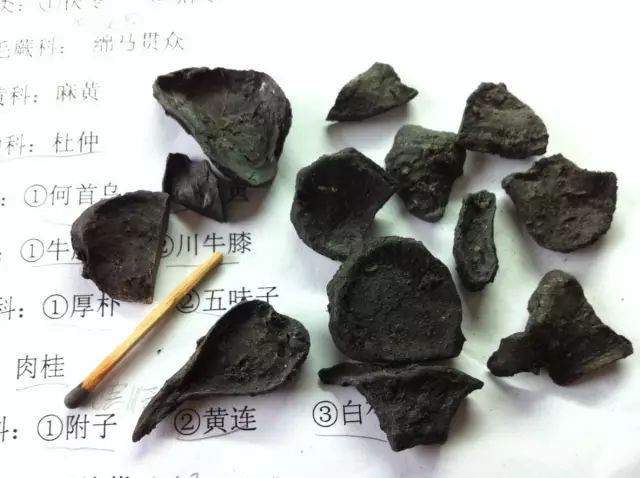
4Systemic Heat Sensation
Dr. Li Ke guided a student in treating a lymphoma patient, where the administration of 800g of processed Fuzi resulted in a burning sensation in the abdomen, accompanied by profuse sweating, requiring a change of sleepwear every half hour. After taking another 800g of processed Fuzi, the patient felt waves of heat surging from the abdomen to the knees and up to the chest, one wave after another.
Simultaneously, the abdominal pain disappeared, and the patient vomited a large amount of thick phlegm, expelling a piece the size of a fingernail, followed by an inability to open their eyes, a desire to call for help but unable to speak, with clear consciousness and no palpitations. Within a quarter of an hour, the patient experienced the mingxuan reaction eight or nine times. When taking 900g of processed Fuzi, after consuming one-third of the dosage, the patient felt heat in the chest, head, and face, and a sensation of heat in the perineum (at the Yin Jiao point).
When taking 1000g of processed Fuzi, the patient suddenly experienced a mingxuan reaction (feeling unwell and drowsy after taking the medicine, able to hear their daughter’s voice but unable to respond, and after about 10 minutes, they regained consciousness), followed by numbness in the mouth, tongue, and body, with a sensation of “waves of heat” moving through, frequent flatulence, and a cool sensation in the knees, with profuse sweating. Ultimately, the patient was cured.
Similarly, in another case of a critical coronary heart disease patient, after taking 100g of processed Fuzi twice, the patient experienced systemic heat, abdominal rumbling, and redness in the face, lips, tongue, and nails, leading to recovery.
The above patients’ experiences of systemic heat sensation are manifestations of the powerful and hot properties of Fuzi, as well as the vigorous support of Yang energy in the body, which, in conjunction with the heat of Fuzi, forcefully expels Yin cold pathogens, exemplifying Zheng Qinan’s statement: “Yang medicine operates, Yin pathogens are transformed away.”
5Yin Cold Pathogens Erupting from Weakness
Dr. Li Ke believes that in the human body, if Yang energy does not reach a certain area, it becomes a site for the accumulation of Yin cold pathogens. When using the Yang-supporting herb Fuzi to invigorate Yang energy, these accumulated Yin pathogens at various body surfaces will be expelled with the heat, leading to various manifestations.
For instance, in a 17-year-old female patient with lupus, after taking 135g of processed Fuzi in a compound decoction, she developed red rashes, spots, and nodules on her cheeks, fingertips, and small joints, with multiple large nodules on her waist and legs, which appeared and disappeared, and her entire body shed a layer of skin, ultimately leading to recovery.
Dr. Li Ke guided a student treating a 65-year-old female patient with arthritis, where on the eighth day of taking 100g of processed Fuzi, a lump appeared on her knee. The dosage was increased to 120g, and after six doses, the patient consulted a Western doctor who suspected Fuzi poisoning, but biochemical tests showed no liver or kidney damage, and the patient ultimately discontinued the medication due to misunderstanding.
Regarding why this situation occurred, he analyzed that the patient was older, had chronic illness depleting her original Qi, and as her original Qi weakened over time, cold pathogens entered the body. The route of the pathogens entering is also the route of their expulsion; now that the original Qi is strong (with the assistance of Fuzi supporting Yang), the hidden pathogens retreat, causing the “lump” to appear, which is merely a manifestation of the expulsion of hidden pathogens.
Dr. Li Ke guided a student in treating a 90-year-old critically ill patient, where after repeated treatments with high doses of Fuzi and Tianxiong, the patient’s condition improved from critical to stable. Subsequently, due to the rise of Yang energy, the patient developed shingles, which was merely the Yin cold dampness and toxic pathogens in the body being expelled through the skin, indicating the expulsion of Yin cold pathogens from within to the surface. Unfortunately, due to improper Western medical treatment, the patient ultimately did not survive.
The pharmacological reactions after taking Fuzi are recorded in detail in Dr. Li Ke’s works and those guiding his students. These reactions, in addition to general sweating, fever, colds, phlegm, cough, diarrhea, intestinal rumbling, and numbness, include the five manifestations mentioned above, which are relatively rare in general diseases. Correctly assisting patients through these intense phases is crucial for recovery.
Dr. Li Ke believes that the path of disease is also the path of healing. Particularly for pathogens entering from the surface, the transformation from Yang to Yin, often manifests as sudden colds, fevers, and coughs, indicating that many pathogens enter from the Taiyang level and can only be expelled from within to the surface, ultimately leading to the patient’s recovery.
In summary, Dr. Li Ke’s experience in formulating medicines is primarily based on classical formulas, often flexibly adapting them based on the foundation of Po Ge Jiu Xin Tang. A student analyzed the patterns of 470 prescriptions collected by Dr. Li Ke between 2006 and 2007.
Over 50% of the frequently used prescriptions included: processed Fuzi (including Chuanwu) at 84.32%, ginger (dried ginger, fresh ginger, ginger carbonized) at 91.68%, cinnamon (cinnamon twig, cassia) at 56%, ginseng (dried ginseng, red ginseng, codonopsis) at 75.11%, and honey-fried licorice at 78%.
From the composition of these medicines, it is evident that this is a typical Gui Fu Li Zhong Tang (without Bai Zhu), which precisely demonstrates that Dr. Li Ke’s approach to supporting Yang is framed within the context of Li Zhong Tang, enhanced with cinnamon and Fuzi, forming the prototype of Gui Fu Li Zhong Tang. This provides us with valuable insights, indicating that the focus of supporting Yang is always on the spleen and kidneys, serving as excellent guidance for treating many difficult and complex diseases.
High-definition tongue diagnosis atlas (collection)
Follow our public account:TCM Treasure Xinglin Medical Classics Qihuang Treasure Suspended Pot Treasure Traditional Chinese Medicine
★ The above content is for reference only; please seek medical attention at a regular hospital if you have any discomfort★
-
Chinese Medicine “Tea Companion”
-
Why do we get heat?
-
Introduction to Pulse Diagnosis
-
In July, it is better not to eat meat, but to eat these 3 melons and 3 beans! Nourish the liver and strengthen the spleen, dispel dampness, and feel comfortable all summer long!
-
Learning to Observe Pulse and Experience of Pulse Diagnosis
-
Introduction to TCM: Pulse Diagnosis Techniques are that Simple!
-
Thick and greasy tongue coating, how Jiang Erxun solves it in clinical practice
-
Summary of Clinical Medication Insights for 10 Diseases, a rare collection
-
Expert: I would rather die than accept “fraudulent” TCM treatment! TCM: Wish you all your wishes come true!
-
Ni Haixia’s “Huangdi Neijing” 75 Complete Online TCM Videos
-
Why can waist and back diseases be treated with Weizhong point? | Wu Guozhong
-
Addressing depression, starting from 6 points
-
He Puren: Experience of Acupuncture Treatment for Migraine
-
What eye diseases can be caused by excessive liver fire? What solutions does TCM offer?
-
Yue Meizhong: Causes and Treatments of Insomnia in the Elderly
-
The Unbreakable Bond Between Perfume and TCM
-
Online Purchase of TCM Textbooks [Part One]
-
Online Purchase of TCM Textbooks [Part Two]
-
Online Purchase of Acupuncture-Related Textbooks [Part Three]
-
Online Purchase of Tui Na-Related Textbooks [Part Four]
-
Online Reading of “Asking TCM How Many Autumn Chills”
-
Online Reading of “The TCM Story of a Grandfather and Grandson” (A Young Doctor’s Medical Journey)
Purchase Physical TCM Textbooks:
TCM Video Tutorials
More content can be found in the article ranking summary of 【TCM Treasure】 >>>
